Exuberant Hungarian: The Art of Matthias Church, Budapest

Art Historians are very good about categorizing art. Everything gets organized into bucket of a particular period or movement, but throughout Hungary, I just found the usual labels to be lacking. While Magyar art and design of the late 19th century draws from several sources, the result is so much more than simple Historicism repeating old designs. They created something unique and truly amazing. It just really resonated with me and so I had to give this style its own name: Exuberant Hungarian. I absolute fell for the Matthias Church in Budapest, with its wild but totally coherent decorative scheme. Take a look and tell me if you’ve ever seen anything like this before, and whether or not you think the “Exuberant Hungarian” moniker fits.
Matthias Church sits prominently atop Castle Hill on the Buda side of the city. The first church on this spot dates to the 11th century but the the majority of the floor plan and structure today comes from a 14th century late Gothic building. A massive overhaul in the late 1800’s added a big tower and transformed the interior into the marvel that it is today.
Your first impression inside is of brilliant color and pattern. Your eyes simply can’t take in all the detail. Everything inside the church is painted! Even the most hidden edges of the neo-Gothic tracery are wrapped in snakes of color.
With more time, you realize that the church has a much more sophisticated visual scheme. Many of the vaults, trim segments, and columns have their own pattern. But since equivalent architectural elements are done with similar colors and related designs, all these elements swirl and converge together into one very unified whole. I absolutely loved the corners and tops of column because here was where these islands of pattern met each other and interacted.
The interior decorations of the Matthias Church are a mixture of styles which I consider a new unique style in itself – hence the “Exuberant Hungarian” moniker. The designs draw heavily from Neo-Gothic and Neo-Reniassnace motifs. You can pick out floral patterns, interlocking vines, and playful geometric boarders. There’s also a similarity to Arts & Crafts, but without the heaviness that comes from being overly detailed. Occasionally, you even find a hint of Art Nouveau, or Jugendstil as it was known in the German speaking empires.
St. Matthias is also decorated with religious scenes and secular images of Hungary’s past rulers. Touching on both of these genres, the life of St. László is depicted in a Romantic, human manner but with the same volume of background design as the rest of the church. Maybe because these are in fact medieval characters participating in the funeral of a hero and saint, but there are some nice shades of the Pre-Raphaelites here, if not Victorian Art in general.
The Matthias Church purportedly contains a miraculous Madonna and Child statue. As the story goes, in order to save the statue from invading Turks in 1541, locals plastered the Madonna and Child up in a church niche, then abandoned Buda. The Turks subsequently turned the Matthias Church into a mosque. 140 years later as the Austrians were battling to reclaim Budapest, their nearby bombs scattered the plaster to reveal the statue. This spooked the Turks who fled allowing Buda to be recaptured with little bloodshed.
While the Madonna and Child statue was very lovely, I was far more interested in the wall decoration in its chapel. Several gorgeous patterns were stacked on top of each other. Each pattern alone was interesting, but together they were stunning. I felt absolutely spoiled!
The designs in the Ecclesiastical Museum, housed in the Church’s choir loft, are more simple. The patterns were recreated using basic stencils when the church was renovated a few years ago. The simplicity, boldness, and harmony reminded me of Maygar folk art.
Needless to say, I thought the interior decoration of the St. Matthias Church was simply gorgeous. There is something about this kind of pattern based art that I find really beautiful. The Exuberant Hungarian style pulls together motifs from several art periods but reduces and purifies them so that the design doesn’t become heavy with excessive detail. The use of bright, contrasting colors keeps things distinct and light. Lastly the complementarity of the designs means you can have several different patterns harmoniously beside each other in one church without conflict.
The hardest part about visiting the St. Matthias church is deciding when you’ve seen enough and can leave, because there are a lot of hidden details, angles, and beautiful art to take in.
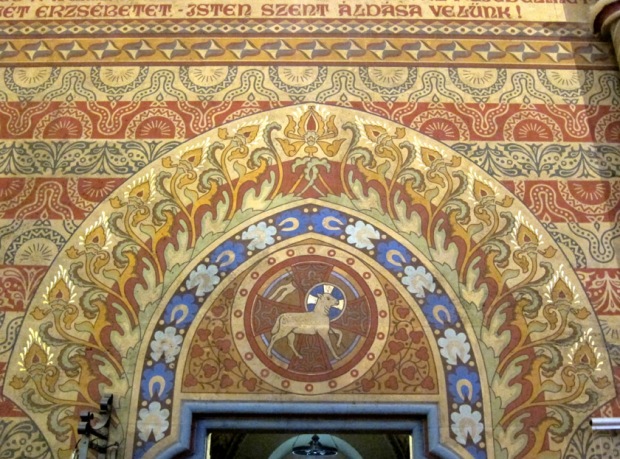
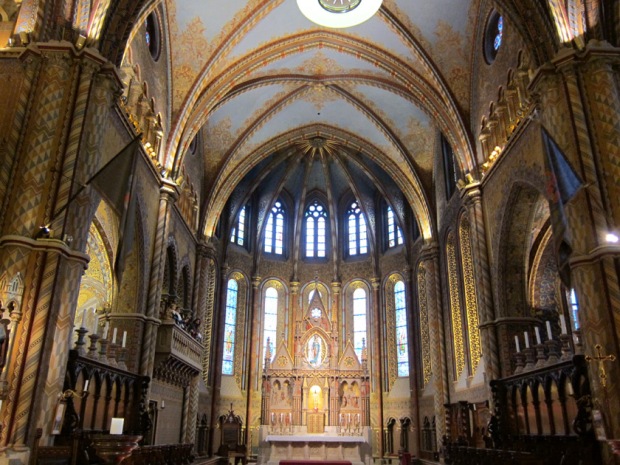
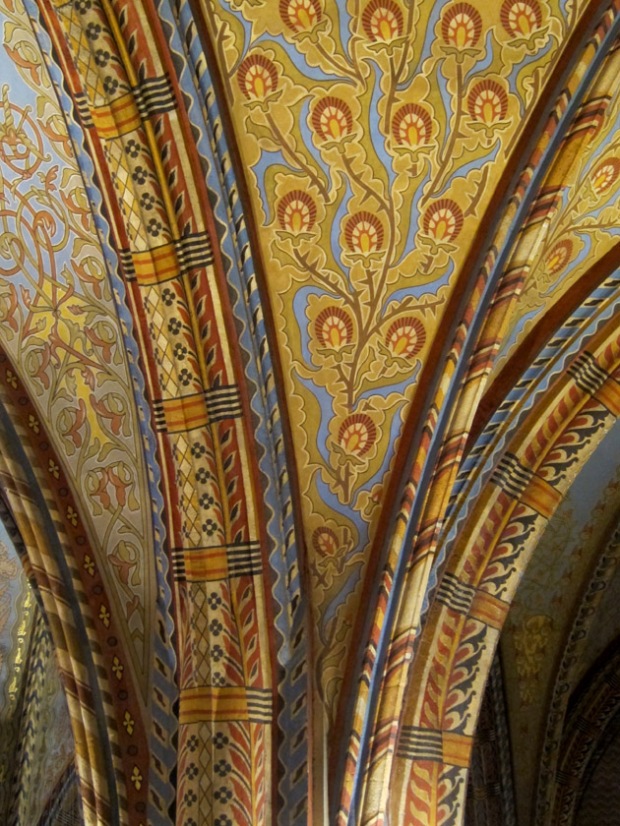


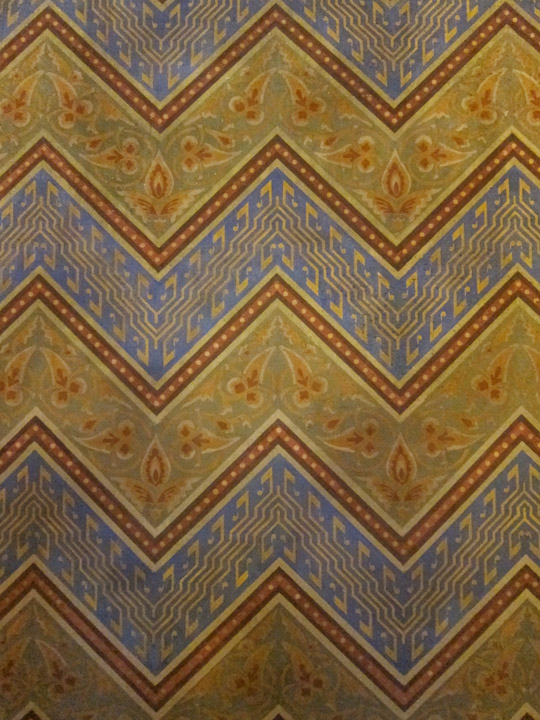
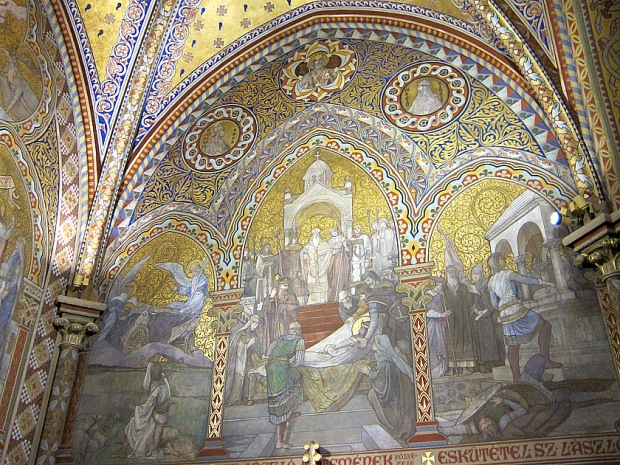
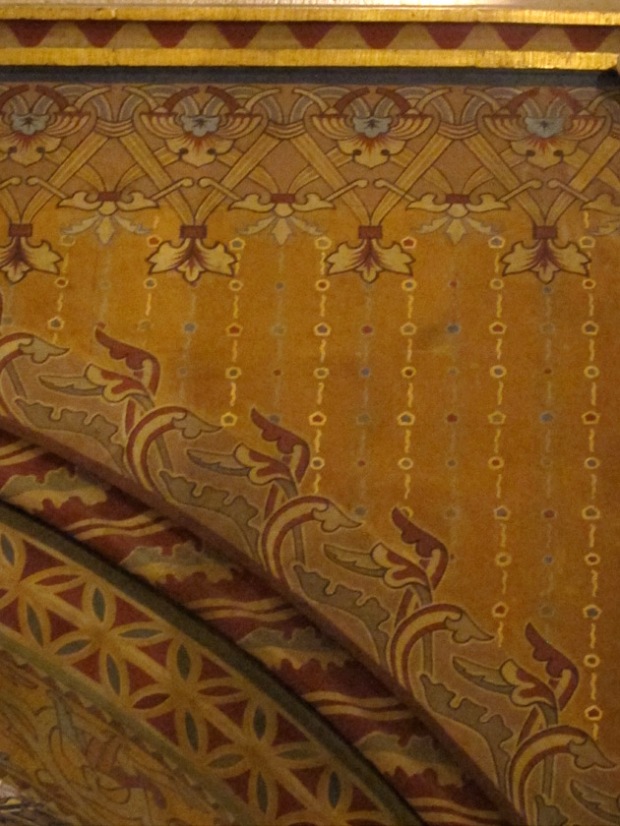
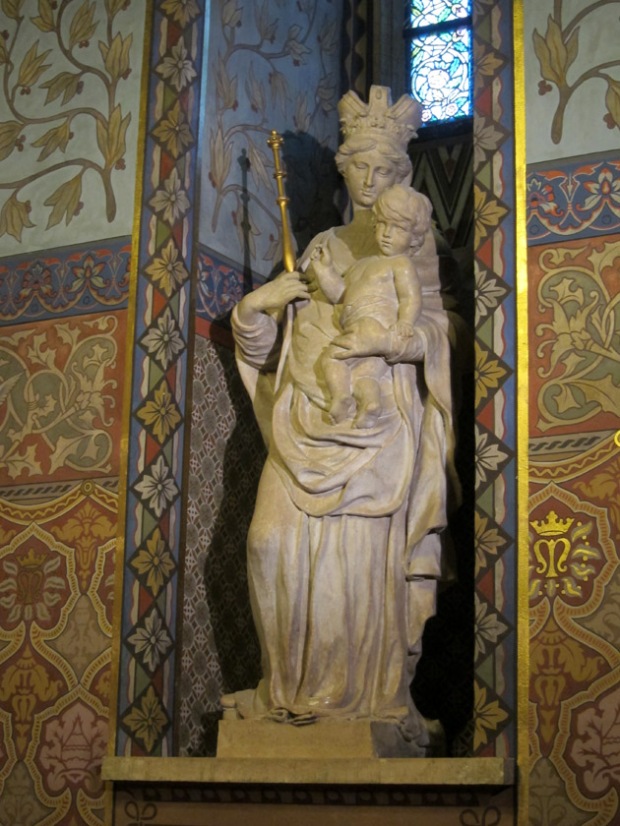
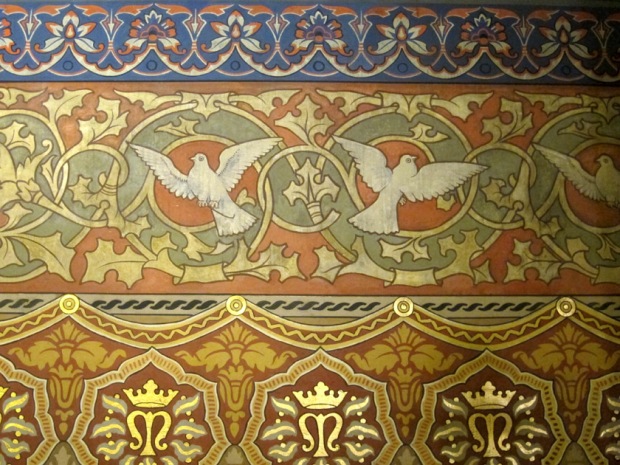


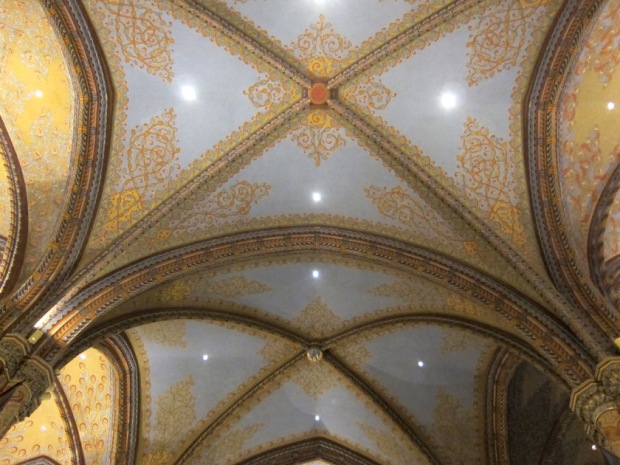




So gorgeous! Can’t stop looking at the photos. Definitely exuberant. I like the comparison to arts & crafts/art nouveau… My favourite decorative style. These photos would look amazing in a gallery!
LikeLike
You’re too kind, thanks so much! I’m also a huge fan of art & crafts and art nouveau which I think was why this church resonated so much with me. You only really get arts & crafts on a domestic scale (wallpaper, furniture, drapes, etc.) which is why it was so fantastic to see a massive church interior done in this way! I definitely lingered in this church…
LikeLiked by 1 person
Exuberant is a word I love! You rarely see/hear it. Never could find a better illustration for that idea than this church’s incredible style! A flood of riches.–Carol
LikeLike
Thank you so much Carol! I also appreciate “exuberant”. It’s hard to contain the energy in this church interior so the name fits. I was so amazed that all these different patterns could be brought together so well and with fantastic visual results. Rather than visual discord, it was so harmonious.
LikeLiked by 1 person
Yes, that’s the true wonder of it!–Carol
LikeLike
Love the “Hungarian Exuberant” movement! WOW! What a great post! I remember this church from my journey there in 2013 and was fascinated by its interior architecture and decoration. Great read my friend!!
LikeLike
Thanks Jeff! Having been there yourself, I’m glad you agree with my new art term. 🙂 This church is so incredible unique and a real treasure for lovers of art!
LikeLike
Since I’m of Hungarian origins, this church has always been the Magyar symbol for us, and sure enough, I always liked it. As a kid it felt like a gigantic church, now the last time I saw it, it felt like it shrank a bit 🙂 And I agree, it is different, it is quite special and your new term for it, “Exuberant Hungarian”, is actually spot on 🙂 I’m not going to swear on it, but I think the Turks not only fled, but they left a very large influence on the decoration, here and elsewhere, something Hungarians not often want to admit easily 🙂
LikeLike
Thanks Pal! I’m glad you like the Matthias Church and it resonates so much with you. You bring up a good point. There is definitely an element of “Orientalism” in Budapest’s art and architecture. I didn’t get it so much in this church as I did other places in the city, but then again the style is so hybridized, it may be in there! Its good to hear that you like the “Exuberant Hungarian” label! I definitely think this style warrants recognition! 🙂
LikeLike
Wow, incredible. Those patterns and range of patterns must have made it feel a bit psychedelic!
LikeLike
Luckily the church is huge so it’s not as claustrophobic and trippy. 🙂
LikeLike
Wonderful photos, Christina! I can’t believe some of that decoration is wallpaper. All the patterning resembles eastern mosaic to me. Absolutely beautiful.
LikeLike
I think it’s a mixture of wallpaper and hand painting. The comparison to eastern mosaic is apt – it was a lot like the painted yello, blue and red patterns throughout the second floor of the Hagia Sophia.
LikeLike
Wow. You and I are kindred spirits. I spent some lovely time in the Matthias Church not long after you wrote this post. I tried to convince my travel mates to make a return visit with me, but they just didn’t get it the way you obviously did. I put a link to this site on my blog post at http://barbarafalconernewhall.com/2017/02/23/matthias-church/
Do you know anything about how all those designs were applied to the walls and ceilings? Were they painted???? thx!
LikeLike